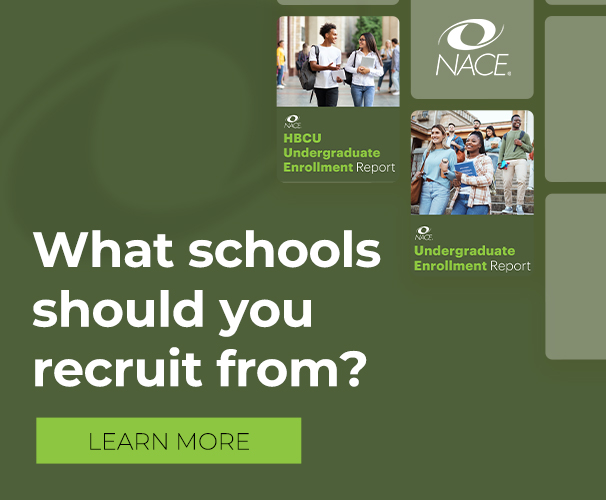Chelsea C. Williams, founder and CEO of Reimagine Talent Co., defines “belonging” as a feeling that people have when they are seen, valued, protected, and respected.
“While, ultimately, individuals determine and define their sense of belonging, I do believe there are steps we can take to build for belonging,” Williams adds.
“In a nutshell, belonging is where intentional diversity, equity, and inclusion collide. When our policies, programs, and practices consider the unique needs, desires, and experiences of our people and we take into account the individual, we bolster a sense of belonging.”
Belonging is important to both the employee and to the organization for which they work. In fact, when an employer fosters a sense of belonging in its workplace, both sides benefit.
Williams points out that to the employee, belonging is what keeps them engaged.
“With greater engagement comes the likelihood for retention,” she says.
“For organizations, belonging is ideal because it helps to improve the employee experience and ultimately strengthens productivity, collaboration, connection, and engagement.”
More on belonging in the workplace
• “NACE Brief: Understanding the Experiences and Attitudes of LGBTQ+ Students”• “Embracing Intersectionality Involves Making Personal Connections to See Value in Each Employee”
• “Training, Intentionality, Accountability Key Elements of Building Inclusive Work Culture.”
However, there are common missteps employers make when it comes to belonging. Kevin La Salle, workforce consultant with Reimagine Talent, says that the most common misstep employers make “is talking the talk, but not walking the walk.” This, he says, manifests in different ways.
“For example,” La Salle notes, “an employer can intentionally attend a diversity-focused career fair, attract and engage underrepresented talent, but fail to create a sense of belonging for that talent once hired.”
Another example he offers occurs when an employer attempts to create a sense of belonging for employees by establishing employee resource groups (ERGs), but does not identify leaders as allies; allocate resources, such as funding; or provide adequate support to the employee resource group.
“Employers must think strategically about how they define and exemplify belonging throughout the entire employee lifecycle in order for it to be effective,” La Salle stresses.
STEPS FOR CREATING A CULTURE OF BELONGING IN THE WORKPLACE
Employers that do not foster a sense of belonging among their employees run the risk of potentially severe consequences.
“Organizations must realize that a sense of belonging has the potential to either positively or negatively impact an employee’s view of the organization and their morale,” La Salle explains.
“Whether or not an employee loves their role isn’t enough for them to remain employed with an organization. Lack of a sense of belonging puts an organization at risk of losing employees because belonging means that before and after work, between meetings, during cultural holidays, and more, employees feel valued and celebrated and have a sense of community.”
Williams says there are a few practical steps employers engaging early talent can take to drive belonging, including:
- Thoroughly assessing job descriptions to ensure they stress must-have competencies over preferences and that the language they use is gender inclusive.
- Proactively showcasing the employer brand. They should communicate how the organization fosters community; offers growth opportunities; and centers diversity, equity, and inclusion.
- Evolving benefits offerings to consider the breadth of needs of early talent professionals. As an often-overlooked example, they should consider socioeconomic indicators, such as unpaid internships.
- Connecting interns to internal community groups, including employee resource groups/business resource groups and social committees that can help them feel represented and build social networks.
- Ensuring people managers are trained, empowered, and held accountable for how they create—or don’t create—belonging. The day-to-day experience is often shaped by immediate managers, so it is vital that the focus is on this population. Too often, first time managers get responsibility for interns with no training or coaching to support this additional responsibility. This is a mistake.
Williams suggests managers use the “3S Method” to foster belonging on their teams. This approach requires them to ensure employees are:
- Seen—Encourage mindfulness around the unique experiences of team. Who are they? What matters most? What does success look like? Seeing employees requires getting proximate and avoiding assumptions.
- Safe—Offer an environment where they feel protected and where they can voice experiences without fear. Within these spaces, employees also trust that when experiences are shared with a manager, they are taken seriously, and that follow-up communication happens.
- Supported—Provide access to resources employees need to do their jobs well and ensure they are publicly valued for contributions.
“Much of driving belonging in the workplace comes down to intention, communication, and empathy,” Williams says.
GUIDING STUDENTS TO SEEK BELONGING
Job seekers should strive to find employers that foster a sense of belonging. Career services professionals can encourage college students to look for or ask about things during their job search that would provide evidence of a culture that values its employees and promotes belonging. Williams recommends they use the “R.O.C. the Job Search” process to assess belonging:
- Representation—Do people with their similar identity, background, and experiences work at this organization? If so, what are their experiences? Do they have positions of management and leadership?
- Opportunities—Does this organization offer opportunities to grow and develop? For example, what training does the organization offer during onboarding? Does the organization offer tuition reimbursement or stipends to pursue continuing education like certificates or conferences? Does the organization offer development programs for diverse populations, such as women, people of color, or individuals with disabilities?
- Culture—What are the values of this organization? How do the values connect to who the student is and what matters most to them? How are employees rewarded for great work at this organization?
Furthermore, Williams says career services professions should challenge students to be mindful of how they feel and what they observe at every aspect of connection that happens with an employer.
“While feelings are not fact,” she says, “students should learn to be in touch with what is going on within as they pursue the opportunities that are best for them. Further, we can absolutely coach students to be more observant through the recruitment process and certainly on the job. At Reimagine Talent, we’ve coined this approach conscious career development.”
Williams encourages students to proactively assess aspects of an employer’s brand, including but not limited, to:
- Websites;
- Social platforms;
- Informational brochures;
- Company presentations;
- Company visitations;
- Networking events;
- Interviews for internships or full-time positions; and
- Internship experience.
“These events provide a sneak peek into what it would be like to work at this employer so they should holistically assess each experience and determine if there is alignment of values, vision, and short-term goals,” Williams points out.
STRATEGIC APPROACHES TO BUILDING, FINDING BELONGING
Through their own work, career services can help their students understand what belonging is and why it is an important element of their career success.
“Career services practitioners themselves can build for belonging,” Williams suggests.
“This is the most powerful tool because they experience belonging and know what it feels like and, in turn, what it doesn’t feel like. Belonging is infectious. Once you experience belonging, you want others to experience it, too.”
Williams encourages career services practitioners to create statements of belonging and ensure that every program, policy, and practice they set helps to build belonging within their diverse student community.
“Further,” she adds, “when they see or hear employers that aren’t upholding this mission toward belonging, they can speak up in order to fuel safe space.”
Williams says three practical ways to drive belonging in career services are:
- Diversifying the career opportunities presented at their college and university—Students often describe a single lens to post-grad employment opportunities. Career services can expand the outlets students can pursue postgraduation: full time, part time, contractor, freelance, and so forth. Practitioners should consider nontraditional sectors and industries where growth is expected within the next decade.
- Ensuring a diverse range of speakers and facilitators for career programs—Practitioners should advocate that employers represent the breadth of their employee base by bringing diverse voices, but also being transparent about the reality of where their workforce is to date. Effort + Transparency = Impact.
- Offering resources that help students overcome socioeconomic barriers—Career services should go beyond offering interview prep resources and consider resources that confront socioeconomic barriers, such as access to business clothing, means to handle hair care and grooming, and technology use. The institution’s alumni association and local nonprofits can support addressing some of these socioeconomic barriers—tap in!
La Salle recommends that to create a strong sense of belonging within their organizations and provide evidence of it throughout the college recruiting process, employers think holistically about their approach to belonging.
“This means that they must define what belonging is for the organization and then create a strategy for how to implement and evolve the strategy based on the needs of their employees,” he says.
“They must also ensure that leaders support the plan through genuine allyship, whether by participation, executive sponsorship, or advocacy. Employers should also be vocal about what belonging means to the organization by sharing their vision with potential employees. They should explain how belonging lives within the organization, such as ERGs, mentoring, and career growth opportunities for underrepresented employees, and acknowledgment of cultural festivities.”
La Salle suggests that the best approach for communicating this information is by sharing testimonials of employees who create, participate in, and are most impacted by experiences of belonging.
“Firsthand experience has the best potential to resonate with job seekers,” he says.
Meanwhile, La Salle encourages career services practitioners to inform students that they should not waver on what’s important to them and that they have ample information at their fingertips.
“If it’s important to have a sense of belonging then they should do their research, whether on LinkedIn, by searching for news articles, or by speaking with employees about their own experience,” he says.
“It’s crucial for students to get the answers that they need in order to make a well-informed decision. Especially post-pandemic, there are news articles about companies that discuss how they treated their employees and what level of care they exercised in such a dire time of need. Recently, during periods of civil unrest, organizations either chose to care for their employees who were impacted, or they chose to be still and silent. Therefore, if it’s important how an organization might show up for a job seeker during similar situations, they should find out how the organization has done so historically. If it’s important for them to see peers and leaders who look like them, they should seek the answer on whether representation exists.”
From their first interaction through the final step in the hiring process, job seekers must be intentional, La Salle says.
“They should observe for themselves and also ask employees who they interact with about what their view of representation is from within the organization,” he recommends.
“After looking for themselves and asking employees, they will have a sense of whether or not belonging exists in the way that they need.”
Williams and La Salle both say it is important for professionals supporting early talent pipelines to understand that we never arrive in this work.
“Identity will continue to be a reality that we will have to learn, explore, and reframe our thinking toward,” La Salle says.
Adds Williams: “Further, given that we are still understanding Gen Z as it relates to career and work, our best bet is to be observant, communicative, and open to all that we can learn about this generation to best serve them; after all, they will shape the future of our country.”






